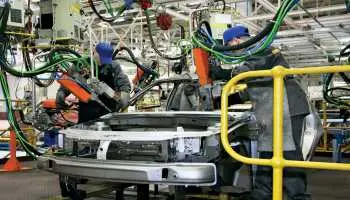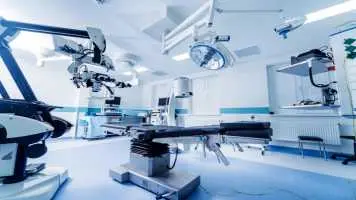Global Nanorobots Market is projected to be worth 39.44 billion by 2034 and is anticipated to surge at a CAGR of 15.63%.
Nanorobots, often referred to as nanobots or nanomachines, are tiny machines that are usually between 1 and 100 nanometers in size and are made to carry out certain cellular or molecular functions. These tiny machines are built using principles of nanotechnology and can be programmed or engineered to navigate through complex environments, making them particularly useful in fields such as medicine, environmental monitoring, and precision manufacturing. Nanorobots have potential uses in the medical field, including minimally invasive surgery, early illness diagnosis, and tailored medicine administration. Their ability to interact with biological systems at a molecular level opens up new frontiers in diagnostics and therapeutics.
Drivers:
The growing interest in nanorobots is driven by their transformative potential across multiple industries, especially in healthcare. One of the primary drivers is the increasing demand for precision medicine, where nanorobots can deliver drugs directly to targeted cells, minimizing side effects and improving treatment efficacy. Advancements in nanotechnology, materials science, and bioengineering are also enabling the development of more efficient and biocompatible nanorobots. Additionally, the rising incidence of chronic diseases such as cancer and diabetes is creating a need for innovative, minimally invasive diagnostic and therapeutic solutions. The potential use of nanorobots in early disease detection, real-time monitoring, and tissue repair is further accelerating research and development efforts. Government support and funding for nanotech research, along with increasing collaboration between academia and industry, are also key factors driving innovation in this field.
Challenges:
Despite their promising applications, nanorobots face several significant challenges. One of the main obstacles is the complexity involved in designing, fabricating, and assembling nanoscale components with high precision. Ensuring biocompatibility and safety within the human body is another major concern, as unintended immune responses or toxicity could pose serious health risks. Powering and controlling nanorobots in real-time within biological environments are technically demanding, often requiring innovative solutions in wireless communication and energy harvesting. Additionally, scalability and cost-effectiveness in manufacturing nanorobots remain unresolved issues, limiting their widespread adoption. Regulatory and ethical concerns surrounding the use of nanorobots in healthcare and other sensitive areas also hinder progress. Finally, the integration of these devices into existing medical systems and infrastructure poses logistical and technological challenges that must be overcome for successful deployment.
Market Trends:
The nanorobots market is witnessing notable trends driven by the increasing demand for precision medicine and targeted drug delivery systems. The shift toward minimally invasive procedures and personalized healthcare solutions has further boosted the adoption of nanorobots capable of operating at the cellular level. Manufacturers are focusing on enhancing biocompatibility and integrating intelligent functionalities such as real-time monitoring and controlled drug release. There is also a growing preference for advanced nanomaterials that offer improved stability, functionality, and interaction with biological environments. Sustainability is emerging as a key focus, with research exploring biodegradable and environmentally friendly nanomaterials. Additionally, the integration of smart technologies, including remote guidance and autonomous navigation, is gaining traction. Automation in design and fabrication processes is being adopted to ensure precision and scalability. Customization for specific medical applications is further enhancing therapeutic outcomes and patient safety.
Global Nanorobots Market Key Players:
Agilent Technologies Inc, Angstrom Advanced Inc, Bruker Corporation, Cavendish Capital Markets Limited, Kleindiek Nanotechnik GmbH and Nanonics Imaging Ltd are just a few of the major market players that are thoroughly examined in this market study along with revenue analysis, market segments, and competitive landscape data.
Global Nanorobots Market Segmentation:
By Type: Based on the Type, Global Nanorobots Market is segmented as; Microbivore Nanorobots, Respirocyte Nanorobots, Clottocyte Nanorobots, Cellular Repair Nanorobots, Others.
By Applications: Based on the Applications, Global Nanorobots Market is segmented as; Nano Medicine, Biomedical, Mechanical, Others.
By End User: Based on the End User, Global Nanorobots Market is segmented as; Hospitals and Clinics, Biopharmaceuticals Industries, Research Laboratories, Others.
By Region: This research also includes data for North America, Latin America, Asia-Pacific, Europe, Middle East & Africa.
This study also encompasses various drivers and restraining factors of this market for the forecast period. Various growth opportunities are also discussed in the report.





































